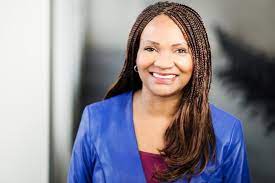Imagine if a new cure prevented one-third of all hospitalizations. How quickly would doctors prescribe it?
The cure exists … but it’s not in a pill or a vial.
The cure is an approach that changes how we practice law and medicine. It is called a medical-legal partnership — doctors and lawyers working side by side in hospitals and other medical settings to solve underlying problems that endanger the health of patients and communities.
Here’s how one of these partnerships worked (an actual case from Indiana): A woman went to the doctor complaining of asthma. The doctor determined that she needed an inhaler, and the doctor also learned the woman was about to be evicted. A lawyer, who worked in the doctor’s office, offered to help the woman. He visited her apartment and found black spots on the walls — mold exacerbating her asthma.
Eventually, the lawyer stopped the eviction, got the patient’s rent deposit and helped her find a better place to live. Her asthma improved.
It seems like such a simple fix, but these partnerships depend on many things coming together: A medical group that wants to work with lawyers. A legal group with enough lawyers to help medical patients. And, perhaps most important, funding to help the doctors and lawyers in their new partnership.
The idea isn’t new. Such partnerships exist in 500 medical settings nationwide, mostly at health centers serving low-income or vulnerable patients. The doctors are usually paid by medical groups; the lawyers are usually paid by local legal aid offices. Start-up money often comes from government agencies and sometimes the private sector.
Medical-legal partnerships work. A study published last year in Health Affairs looked at 2,203 child patients in Cincinnati who were referred to a medical-legal partnership. Researchers compared those children with child patients who were not referred to a partnership.
The result? A 38 percent reduction in expected hospitalizations one year later among the children who received legal intervention. Researchers concluded that the decrease was caused by lawyers addressing legal needs that affected the children’s health — for example, evictions or denials of public health benefits.
The Boston Globe reported on this study in May, quoting Dr. Robert Kahn, a pediatrician and researcher, saying, “If there was a pill that dropped all-cause hospitalization by 38 percent, everybody would go after it.”
The good news is that the number of medical-legal partnerships has tripled since 2015. The bad news is that most health centers still don’t have one.
According to the National Center for Medical-Legal Partnership at George Washington University, there are 200 medical-legal partnerships in health centers serving low-income patients, plus an additional 150 in the works. But 1,400 such health centers exist nationwide, meaning three-quarters don’t have medical-legal partnerships.
If doctor-lawyer partnerships are so helpful, why aren’t they more common?
Part of the problem is a lack of incentives to be creative and collaborative. The public sometimes perceives doctors and lawyers as adversaries but they are natural allies in patient care, health equity and social justice. The American Bar Association and the American Medical Association have groups promoting medical-legal partnerships.
Funding is also key, particularly on the legal side. Most lawyers in medical-legal partnerships come from legal aid organizations funded by the Legal Services Corp., which is funded by Congress. Some funding also comes from healthcare dollars.
But there isn’t enough funding, and what is available isn’t stable year to year. At least a dozen health centers said they no longer have medical-legal partnerships primarily because of a lack of funding. Leaders at 80 percent of medical-legal partnership programs said funding is the biggest challenge to sustaining or expanding the programs.
Helping low-income Americans when they visit the doctor is a good strategy. But without adequate funding, even the best solutions — even a miracle pill — cannot work.
The answer is greater cooperation between doctors and lawyers, and greater funding for organizations that support medical-legal partnerships. America’s health depends on it.



